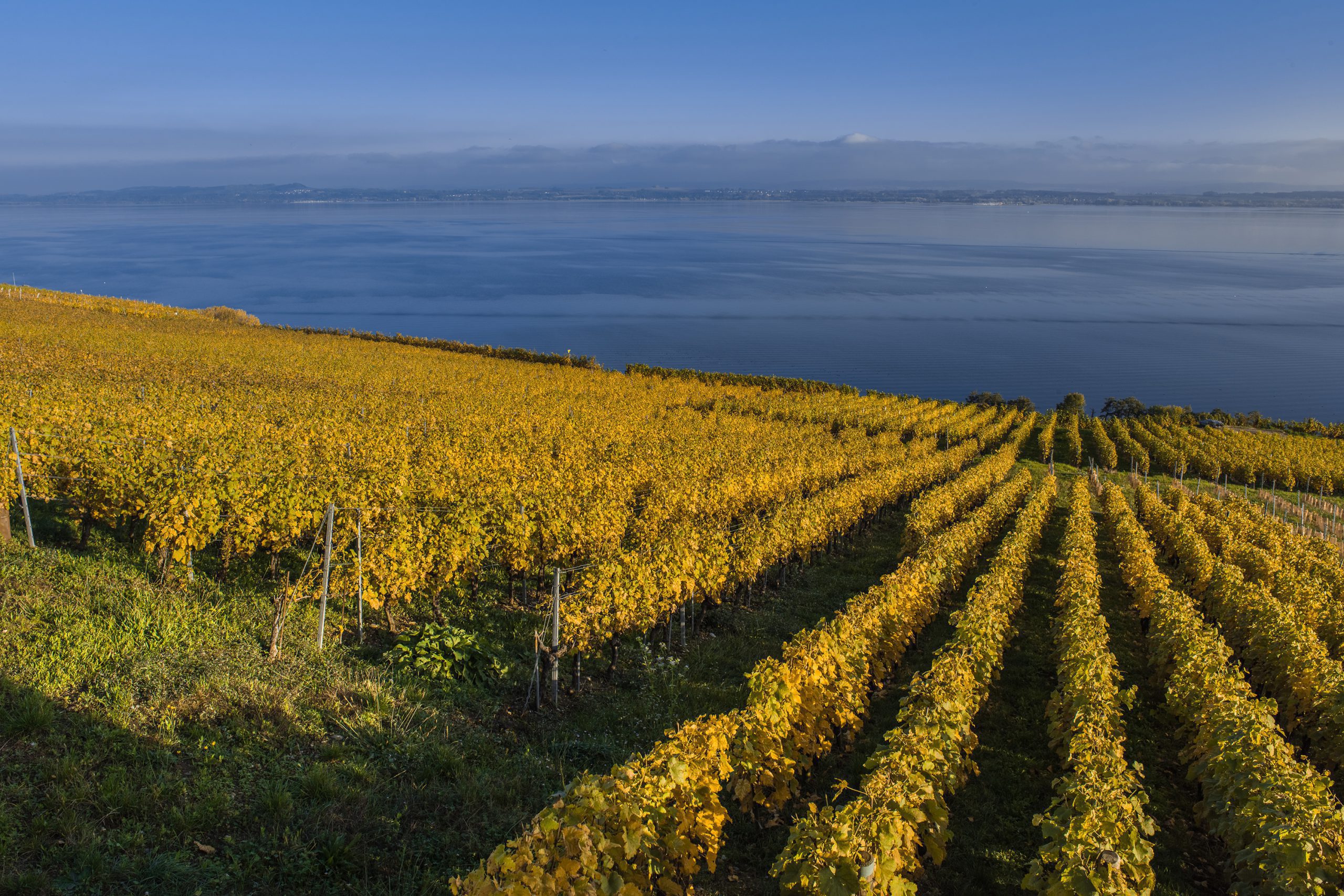Vineyard
The natural environment
The climate
The Neuchâtel coast offers its vineyards a climate tempered by the proximity of the lake, which mitigates the rigors of winter and summer heatwaves. Backed by the Jura mountains, it is sheltered from the humid Atlantic currents. Its configuration and orientation towards the east provide ideal ventilation and sunshine for the ripening of renowned vintages, giving them finesse and roundness.
Soils
Stretching along the foot of the first mountain range, the vineyard’s soils are characterized by their Jurassic origin. Primarily stony and light, sometimes marly and heavier, or even alluvial and deep, they all have limestone in common. The soil’s low humus content and high mineral content are further valuable assets for producing great wines. In the best parchments, the vines are forced to plunge their roots deep into the soil to feed themselves, enhancing the rich bouquets and full-bodied flavors of noble grape varieties.


Two millennia of history
Vines have been part of the Littoral landscape for two millennia, with vine cultivation and wine production probably beginning with the colonization of the region by the Romans. Yet it was the monks who, with the fall of the Roman Empire and the advent of Christianity, established this new culture and encouraged its development. Tireless workers, they cleared uncultivated land to create new vineyards.
Thus, at the time of its foundation in 998, the Priory of Bevaix received permission to plant its first vineyard. The Domaine de l’Abbaye is considered the original vineyard of Neuchâtel.
Like many others, Neuchâtel’s vineyards have undergone periods of expansion and regression. The peak of its extent was reached in the mid-17th century, probably due to increased demand during the Thirty Years’ War.
We only have precise information on the development of the canton’s wine-growing area since the end of the 19th century. It can be seen that vineyards fell from over 1,200 ha in 1884 to 606 ha in 2002, reaching their maximum erosion in the early 1970s with 560 ha. These fluctuations are mainly due to phytosanitary causes (diseases, pests), but also to structural, cyclical and political reasons.
Grape varieties
Red
379 hectares are planted with red grapes, representing 63% of Neuchâtel’s vineyards. Pinot Noir is the prince of our vineyards, occupying 334 hectares (55%). Gamaret and Garanoir together account for 4% of the vineyard, with 14 hectares and 9 hectares respectively.
White
Thirty-seven percent of the vineyard is planted with white grapes, representing 225 hectares. Chasselas represents 25% of the total surface area (150ha), Chardonnay 4% (26ha) and Pinot Gris 4% (24ha).
